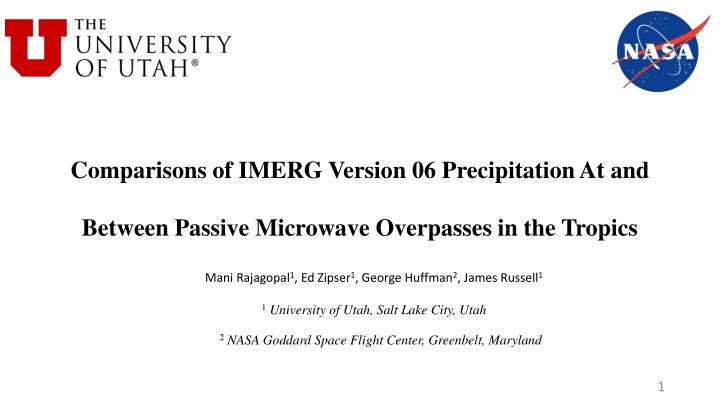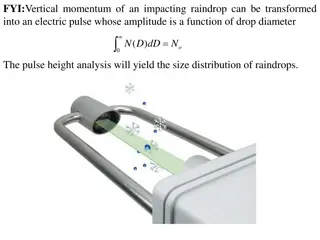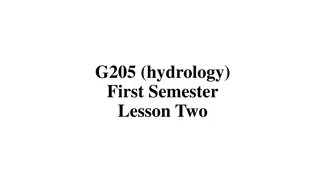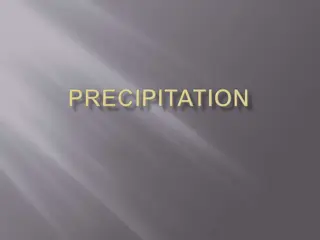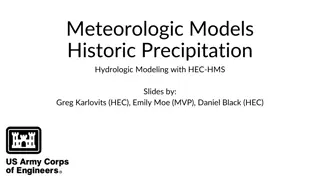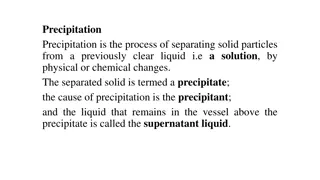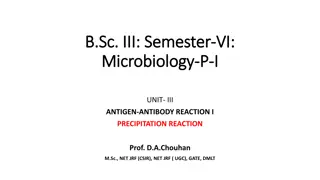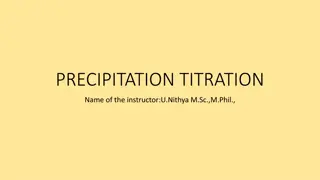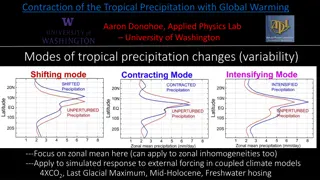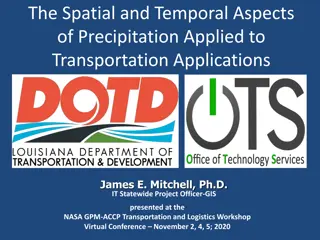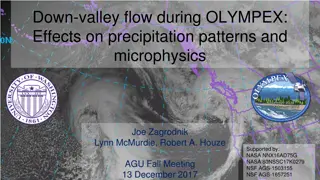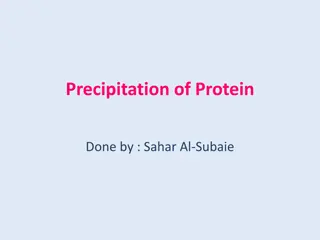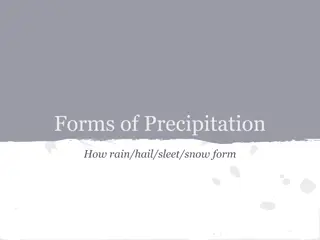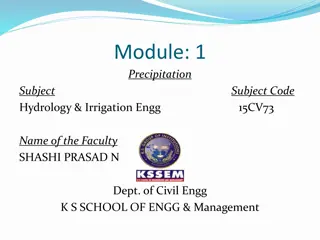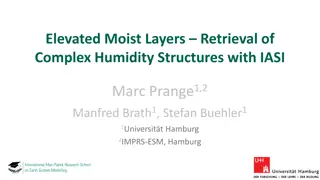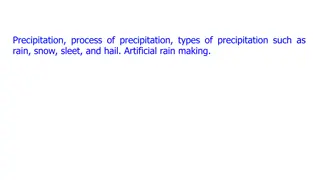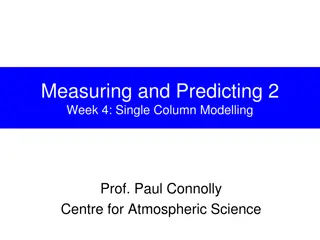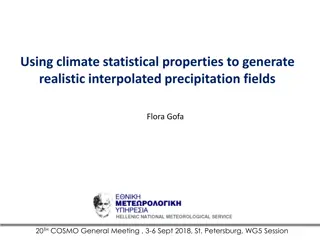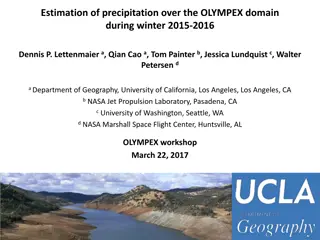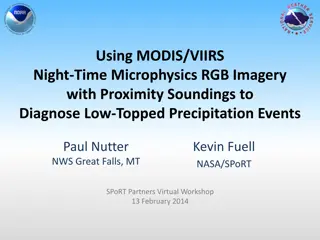Comparisons of IMERG Version 06 Precipitation in the Tropics
Integrated Multi-satellite Retrieval for GPM (IMERG) by NASA provides global precipitation data. This work validates IMERG version 06 and compares it with data from the Convective Processes Experiment. It analyzes precipitation rates at and between Passive Microwave Overpasses. Two case studies from the CPEX field program in 2017 are presented, along with a comparison of precipitation frequency distributions over global tropics. The source of IMERG precipitation estimates from multiple passive microwave sensors and the methodology used are also discussed.
Download Presentation

Please find below an Image/Link to download the presentation.
The content on the website is provided AS IS for your information and personal use only. It may not be sold, licensed, or shared on other websites without obtaining consent from the author.If you encounter any issues during the download, it is possible that the publisher has removed the file from their server.
You are allowed to download the files provided on this website for personal or commercial use, subject to the condition that they are used lawfully. All files are the property of their respective owners.
The content on the website is provided AS IS for your information and personal use only. It may not be sold, licensed, or shared on other websites without obtaining consent from the author.
E N D
Presentation Transcript
Comparisons of IMERG Version 06 Precipitation At and Between Passive Microwave Overpasses in the Tropics Mani Rajagopal1, Ed Zipser1, George Huffman2, James Russell1 1University of Utah, Salt Lake City, Utah 2NASA Goddard Space Flight Center, Greenbelt, Maryland 1
Introduction Introduction Integrated Multi-satEllite Retrieval for GPM (IMERG) is NASA s global precipitation product available at 0.1 x 0.1 spatial. resolution. In this work we validate IMERG version 06 final run, a research quality product, availableevery 30 minutes. We use DC-8 aircraft data from the Convective Processes Experiment (CPEX), a NASA sponsored field program, to qualitatively compare with IMERG precipitation at and between PMW overpasses. Two case studies from CPEX field program June 6th and 10th, 2017, are presented here. Also, we use bulk statistics over global tropics (30 N 30 S) for a 19 year period (2001 -2019) to compare frequency distribution of precipitation rates between locations/times with and without PMW observations. 2
IMERG precipitation source IMERG precipitation source IMERGcombinesprecipitation estimates from multiple passive microwave(PMW) sensors available in a 30-minute analysis time. These estimates are retrieved using the Goddard Profiling (GPROF) algorithm that converts PMW brightness temperatures to a precipitation estimate. However, the PMW sensors have only a partial global coverage in a 30-minute interval. In the gaps between PMW swaths, IMERG uses time-morphing to estimate precipitation. 3
CPEX case study I : June 6 CPEX case study I : June 6th th, 2017 , 2017 On June 6th, 2017, the DC-8 aircraft investigated a large and intense MCS in the Gulf of Mexico. The time series for the observed MCS shows that the maximum precipitation rate peaks up to ~80mm/hr during PMW observations and sags to ~40mm/hr between the PMW overpasses. Time series of MCS properties inferred from the precipitation object that was subjectively tracked in IMERG. The precipitation area is multiplied by a factor of 2 to make variations visible, because it shares y-axis with volumetric rain rate with large values. 4
CPEX case study II : June 10 CPEX case study II : June 10th th, 2017 , 2017 On June 10th, the DC-8 aircraft investigated a small MCS over the western Atlantic ocean. The forward camera shows only scattered shallow cumulus ahead of the aircraft, and the pilots radar has no echo in that direction. However, IMERG shows a mesoscale area with spurious light precipitation (< 1.0 mm/hr). There are no PMW observations in this half-hour period. The previous PMW overpass was ~45 minutes earlier, and the next overpass is ~150 minutes later. Images from the CPEX mission on June 10th 2017 (a) Forward camera, and (b) Pilot s radar. (c) DC-8 aircraft track overlaid on IMERG precipitation for the half-hour period 20:30-21:00 UTC. The black dot represents the DC-8 location at 20:30 UTC, and the arrow points in the direction of the aircraft heading. 5
Precipitation rate distribution: Away from PMW overpass Precipitation rate distribution: Away from PMW overpass At locations without PMW observations (non PMW), there are higher occurrences of light rain rates (similar to June 10th case study) and lower occurrences of heavy rain rates. Also, as the time interval away from PMW observations increases, there is a considerable drop in the frequency of heavy rain rates. This is consistent with the finding from June 6th case study. 6
Conclusions Conclusions When there is no PMW observation, time morphing sometimes produces spurious precipitation areas. For MCSs subjectively tracked as precipitation objects in IMERG, the maximum precipitation rate peaks during PMW overpasses and sags between them. The frequency distributions of precipitation rates show that times and locations without PMW observations have higher frequencies of light precipitation rates, and the frequency of heavy rain rates decreases as the time away from PMW overpass time increases. IMERG team has developed a new algorithm called SHARPEN, which will be implemented in the next release of IMERG version 7.0. This algorithm is expected to considerably reduce the issues reported here. 7
Acknowledgements Acknowledgements We appreciate the skill and dedication of the pilots, flight crews, instrument teams, and NASA supporting staff that made the CPEX field program successful. This research was supported by NASA Grant NNX17AG74G under the leadership of Ramesh Kakar and Gail Jackson. The authors would like to thank Dr. Jackson Tan at NASA s Goddard Space Flight Center (GSFC), Maryland, for his invaluable insights on the workings of the time morphing algorithm and IMERG. References References Huffman, G.,J., and Coauthors, 2019a: NASA Global Precipitation Measurement (GPM) Integrated Multi-satellitE Retrievals for GPM (IMERG). Algorithm Theoretical Basis Doc., version 4.6, 28 pp., https://gpm.nasa.gov/resources/documents/algorithm-information/IMERG-V06-ATBD. , and Coauthors, 2019b: Integrated Multi-Satellite Retrievals for GPM (IMERG) technical documentation. NASA Tech. Doc., 77 pp., https://gpm.nasa.gov/resources/documents/IMERG-V06-Technical-Documentation. Joyce, R. J., J. E. Janowiak, P. A. Arkin, and P. Xie, 2004: CMORPH: A Method that Produces Global Precipitation Estimates from Passive Microwave and Infrared Data at High Spatial and Temporal Resolution. J. Hydrometeor., 5, 487 503, https://doi.org/10.1175/1525- 7541(2004)005<0487:CAMTPG>2.0.CO;2. Kummerow, C., D., D. L. Randel, M. Kulie, N. Wang, R. Ferraro, S. Joseph Munchak, and V. Petkovic, 2015: The Evolution of the Goddard Profiling Algorithm to a Fully Parametric Scheme. J. Atmos. Oceanic Technol., 32, 2265 2280, https://doi.org/10.1175/JTECH-D-15-0039.1. 8
